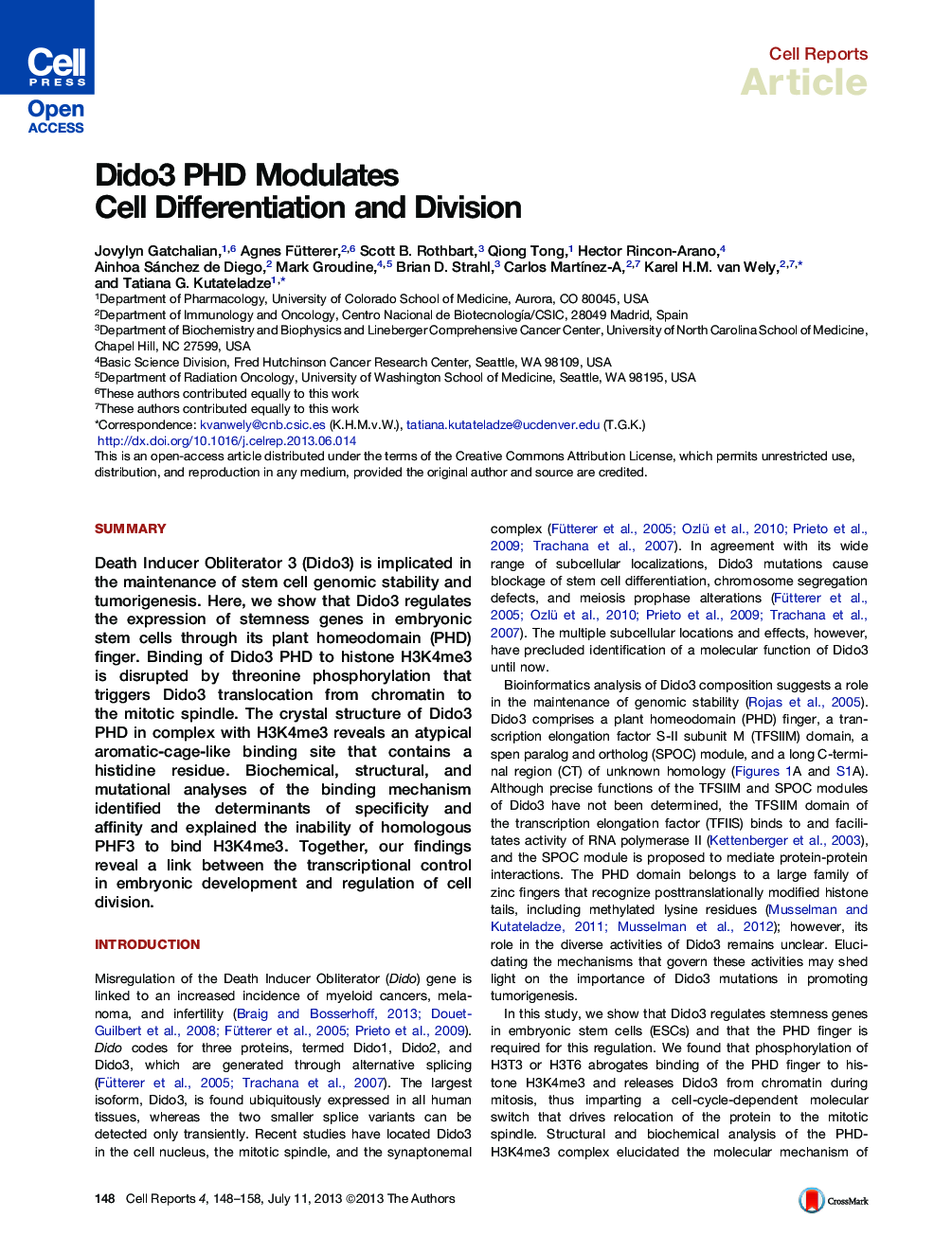| Article ID | Journal | Published Year | Pages | File Type |
|---|---|---|---|---|
| 2040085 | Cell Reports | 2013 | 11 Pages |
•Dido3 regulates expression of stemness genes through its PHD finger•The Dido3 PHD finger recognizes histone H3K4me3•Histone phosphorylation causes Dido3 to relocate to the mitotic spindle during mitosis•Dido3 provides a link between embryonic development and cell division
SummaryDeath Inducer Obliterator 3 (Dido3) is implicated in the maintenance of stem cell genomic stability and tumorigenesis. Here, we show that Dido3 regulates the expression of stemness genes in embryonic stem cells through its plant homeodomain (PHD) finger. Binding of Dido3 PHD to histone H3K4me3 is disrupted by threonine phosphorylation that triggers Dido3 translocation from chromatin to the mitotic spindle. The crystal structure of Dido3 PHD in complex with H3K4me3 reveals an atypical aromatic-cage-like binding site that contains a histidine residue. Biochemical, structural, and mutational analyses of the binding mechanism identified the determinants of specificity and affinity and explained the inability of homologous PHF3 to bind H3K4me3. Together, our findings reveal a link between the transcriptional control in embryonic development and regulation of cell division.
Graphical AbstractFigure optionsDownload full-size imageDownload as PowerPoint slide
